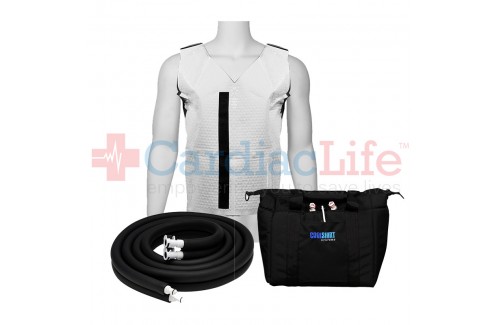Vigorous activity, in general, can bring on Heat-related problems. With the warmer weather, the danger is increased substantially. The body needs to maintain a temperature of 37 degrees Celsius or 98.6 degrees Fahrenheit. Excessive external temperatures cause the inner body core temperature to rise.
Dehydration and heat stroke are two very common heat-related diseases that can be life-threatening if left untreated.
Heat stress occurs when our body is unable to cool itself enough to maintain a healthy temperature. Normally, the body cools itself by sweating, which normally accounts for 79 to 80 percent of the body's heat loss. Excessive sweating can lead to dehydration. If a person becomes dehydrated, they don't sweat as much, and their body temperature keeps rising.
It also occurs if an individual is overexposed to the sun and not drinking enough water. This is caused when the body loses water content and essential body salts, such as sodium and potassium. Electrolyte imbalance can lead to sudden cardiac arrest.
Sadly, we begin to see news of collapse and death during the summer months. Children and teenagers account for 47.6% of heat-related injuries. Many young athletes come to practices already dehydrated. Heat-related illnesses can range from Heat Rash and Heat Cramps to Heat Exhaustion and Heat Stroke. Heat Stroke requires immediate medical attention and can result in death.
Heat Exhaustion:
Heat Exhaustion is actually dehydration that causes cardiovascular strain. It can lead to Heat Stroke, which is sometimes referred to as Sun Stroke.
Symptoms:
- Goose Bumps
- Fainting
- Tingling Skin Sensation
- Muscle cramps
- Dull headache
- Nausea
Heat Stroke:
Heat Stroke is the most dangerous heat-related illness that results in a body temperature over 104 degrees and confusion. Medical attention is crucial. Heatstroke can cause brain damage, damage to other organs or death.
Symptoms:
- Nausea/vomiting/dizziness
- Confusion
- Disorientation
- Very Hot Body Temperature
- Fainting
- Dry swollen tongue
- loss of consciousness
- Coma or even death
Prevention:
1. Keep physical activity in the shade. Early mornings and after the sun goes down is best.
2. Hydrate! Drink plenty of water. Have it Handy!
3. Wear lighter clothing and more breathable fabrics.
4. Skip pre-workout supplements.
5. Cool off in a pool or other nearby body of water.
6. Athletic teams can have the Cool Shirt system available for athletes to wear during breaks. Cool Shirt drops the core temperature of the athlete to prevent heat stroke and the consequences of it.
7. Develop and follow a Heatstroke prevention plan.
8. Train staff in prevention and management plans in work and athletic situations.
9. Have necessary medical supplies on hand such as an AED and a simple to use Cooling Vest system or other cooling techniques and supplies.
How to Manage when Heat Exhaustion or Heat Stroke develops:
1. Call 911 immediately
2. While waiting for medical personnel find shade and lie them down.
3. Remove excess clothing.
4. Use the cool vest system to lower their body temperature, wet their skin with water or wrap in wet cloths and then fan them continuously.
5. Monitor their temperature with the goal of getting it back to normal.

